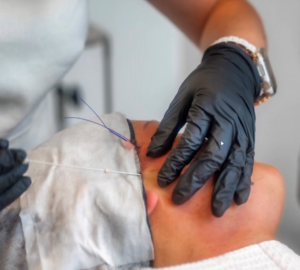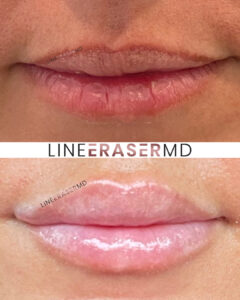Vampire facials are not the latest cosmetic trend, and yet, as a procedure, they still pose a stigma among those curious to try.
In essence, a vampire facelift is a procedure that combines two popular techniques- microneedling and platelet-rich-plasma, or PRP. Both techniques aim at the same goal- to correct various skin imperfections, as well as tighten and heal aging skin.
The results following vampire therapy are rejuvenated skin, even complexion, minimized wrinkles, acne, and scarring tissue, among others.
Given the ongoing misunderstanding of what this treatment is and isn’t, let’s look at the facts and myths behind a vampire facelift.
Vampire Facial Facts and Myths
Myth 1: Vampire Therapy Includes Surgery
Despite popular opinions, a vampire facial is a non-surgical anti-aging procedure.
In fact, the treatment revolves around microneedling the affected skin area, using your own blood plasma in the process. Using a special microneedling tool, a specialist will make tiny punctures against the top skin layer, thus boosting collagen and elastin production, and correcting related skin imperfections.
Due to the nature of the treatment, it will help boost tissue recovery and rejuvenate the skin without relying on a surgical approach.
Myth 2: Vampire Facelifts are Dangerous
Actually, a blood facial procedure uses a microneedling technique that infuses your own plasma into your skin, which is a safe approach using a natural product.
Before the procedure, an aesthetician will draw blood from your arm and centrifuge it to separate the PRP.
Microneedling allows equal distribution of the PRP into your skin, through painless and safe punctures against the problematic skin areas. As a result, the method triggers collagen and elastin production, which helps regenerate the skin safely and without causing adverse effects.
Myth 3: A PRP Facial is Painful
While a vampire facial is not painful, there might be a certain discomfort during the procedure, especially if it is your first time getting used to microneedling. To prevent any discomfort, prior to the procedure, a specialist will apply numbing cream on your face, thus easing the level of sensation.
Most patients experience a tingling sensation followed by sudden warmth in the face, which is a normal occurrence. The most sensitive areas during microneedling include the forehead, hairline, and jawline, or the bonier facial areas.
Following the treatment, your aesthetician might recommend taking Acetaminophen to ease any potential discomfort thereon.
Myth 4: Blood Facials Demand a Longer Recovery
Fortunately, blood facelift treatment is one of the most ideal options for fast and effective results.
As the procedure takes up to an hour, you can leave the clinic on your own once done.
In the first 12 to 24 hours, you might experience slight redness or swelling in your face, which can be easily covered up with makeup. Most patients are able to continue their day-to-day activities following a vampire facial procedure. The first results are visible several weeks following the treatment.
Fact 1: Vampire Lifting is Natural and Safe
As the plasma used during the treatment comes directly from the patient, it makes the procedure safe to do and completely natural.
The technique does not use chemical additives or enhancers, and as a result, it does not cause allergic reactions or skin infections. Aside from being safe and pain-free, the procedure is also suitable for all patients looking to improve the overall appearance of their skin.
Fact 2: Plasma Accelerates Skin Regeneration
As the most natural option, a patient’s plasma is the best approach to treating problematic skin.
In essence, the plasma used during the procedure contains potent compounds that are able to stimulate fibroblasts in the skin, thus producing more collagen that helps heal the skin and bring back its former glow.
Fact 3: Vampire Facials Require Recuperation Time
While vampire lifts are not surgical and allow quick healing in a few days, they might not be ideal to do last-minute or before an important event.
After the treatment, your skin might show redness or swelling, and some patients might even experience minor bruising, due to the superficial punctures.
For best results, while recovering in the first few days, avoid using any creams or makeup on the face.








